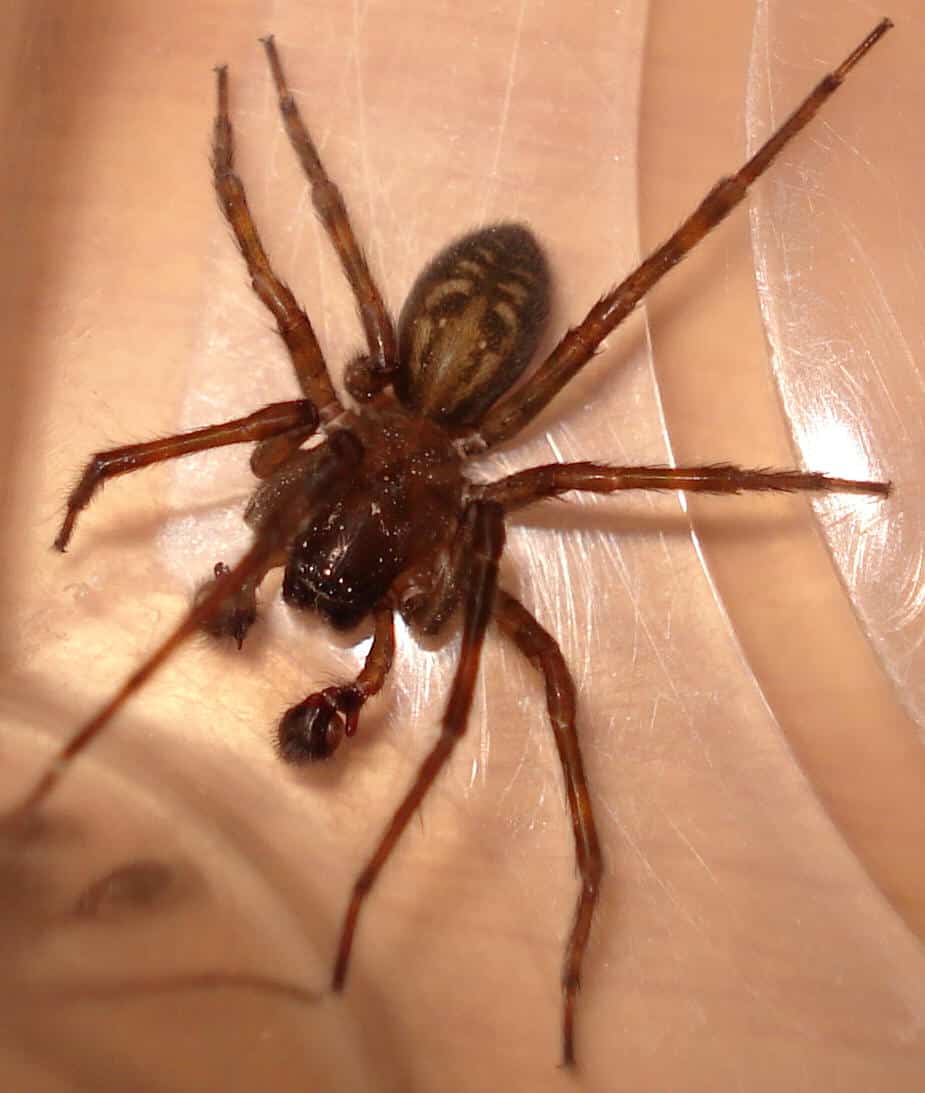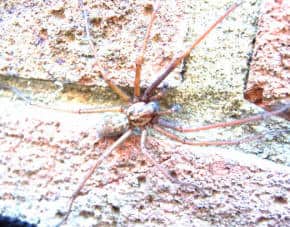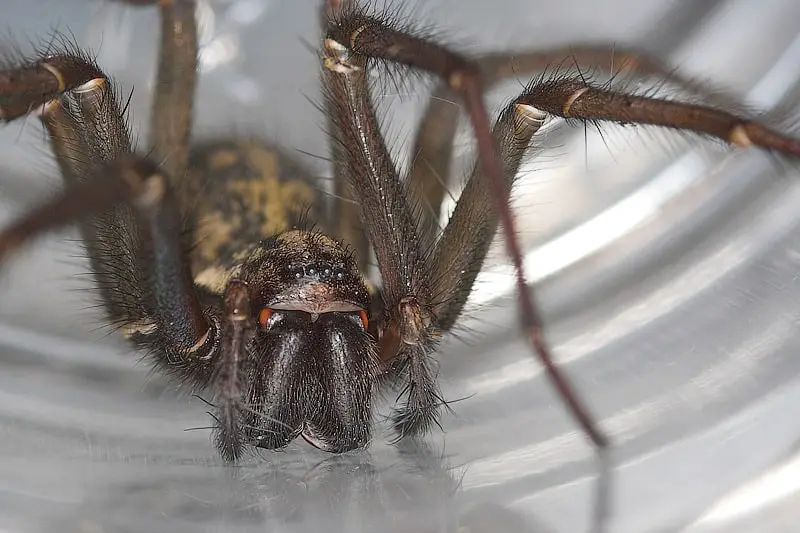These spiders belong to the Eratigena family of spiders. The adult Hobo spider is a moderately large (12-18 mm body length) brown spider, with long, unmarked legs (legs included, a typical specimen would fit nicely on a silver dollar). The dorsal abdomen exhibits a “herringbone” or multiple chevron pattern, which may be quite obscure in darker individuals. The male sports two pedipalps (antennae like protuberances) between the two front legs, which are swollen at the ends, looking somewhat like a pair of boxing gloves; these “boxing gloves” are actually the male genitalia, not “fangs” or “poison sacs”.
The female generally has a larger abdomen than the male, and does not have swollen “boxing gloves” at the ends of the pedipalps. Several other spiders resemble hobo spiders; only an arachnologist, or other specifically trained person should attempt to make a positive identification of this species: In an instance where a spider has bitten a person, it is imperative to obtain positive identication only from a qualified professional arachnologist.

Hobo spiders belong to the family Agelenidae or funnel web weavers which is indigenous to western Europe that was introduced into the north western United States (Port of Seattle) sometime before the 1930’s. The means of the spiders’ introduction into the United States was almost certainly commercial shipping vessels carrying cargo originating from agricultural areas of Europe.
It is highly probable that they were transported to and arrived in the Port of Seattle as egg cases attached to wood, etc., rather than as live spiders. Considering the seasonal nature of the Hobo Spider, it is highly unlikely that a viable breeding population would have developed in the United States based upon the occasional introduction of adult or juvenile specimens.
In its native Europe the Hobo Spider is a resident of fields, rarely entering human habitations due to the presence of major competitors, particularly the giant house spider, Eratigena atrica, which is a common resident of houses and other man-made structures in Europe; therefore, human contacts with the hobo spider are uncommon in Europe. In the United States however, the Hobo Spider rapidly adapted to living in urban areas, and without the widespread presence of a dominant competitor, became abundant and began to extend its range; by 1968 it had become established as far east as Spokane, Washington and Moscow, Idaho, and as far south as Corvallis, Oregon.
In the late 1960’s and early 1970’s physicians in Idaho, Oregon and Washington were presented with cases of probable spider bite that closely resembled bites caused by the brown recluse spider, Loxosceles reclusa. Studies conducted between 1974 and 1982 suggested that another spider was probably the actual agent of these bites. Finally, in 1983, field studies revealed that the Hobo Spider was the actual cause of such bites in the northwest, and the spiders’ ability to produce necrotic lesions and systemic illness was demonstrated in the laboratory in 1986.
The reason hobo spiders have a reputation for being so aggressive is because they have very poor eye sight and have to aggressively attack their prey to catch it. Their web is not sticky either which makes it harder for them to catch prey. Therefore with their poor eye sight, they think humans or anything that moves probably, are prey and attack. In around 50% of bites, no venom is injected so their reputation is probable overated too. However when it is injected, necrosis occurs and the resulting wound can take years to heal with much skin being eaten away!

Giant House Spider – Eratigena atrica (or duellica)

The Giant house spider (Eratigena duellica or atrica; formerly known as Tegenaria gigantea) is a member of the genus and is a close relative of both the Domestic house spider and the infamous Hobo spider. The bite of this species does not pose a threat to humans or pets.
Females can reach 18 mm in length, with males having a slightly smaller body at around 12 mm to 15 mm in length. The female leg span is typically around 45 mm. The leg span of the male is highly variable, with spans between 25 mm to 75 mm being common.
The Giant House Spider has the same coloration as the Domestic house spider; Earthy tones of brown and muddy red or yellow. They also have conspicuously hairy legs and abdomen.
Click here for more photos of Hobo Spiders.
Information and pictures were taken from children’s projects and where credited to that child does not claim to be original information. Where possible, permission to reproduce has been sought. Any infringement of copyright is purely unintentional.
